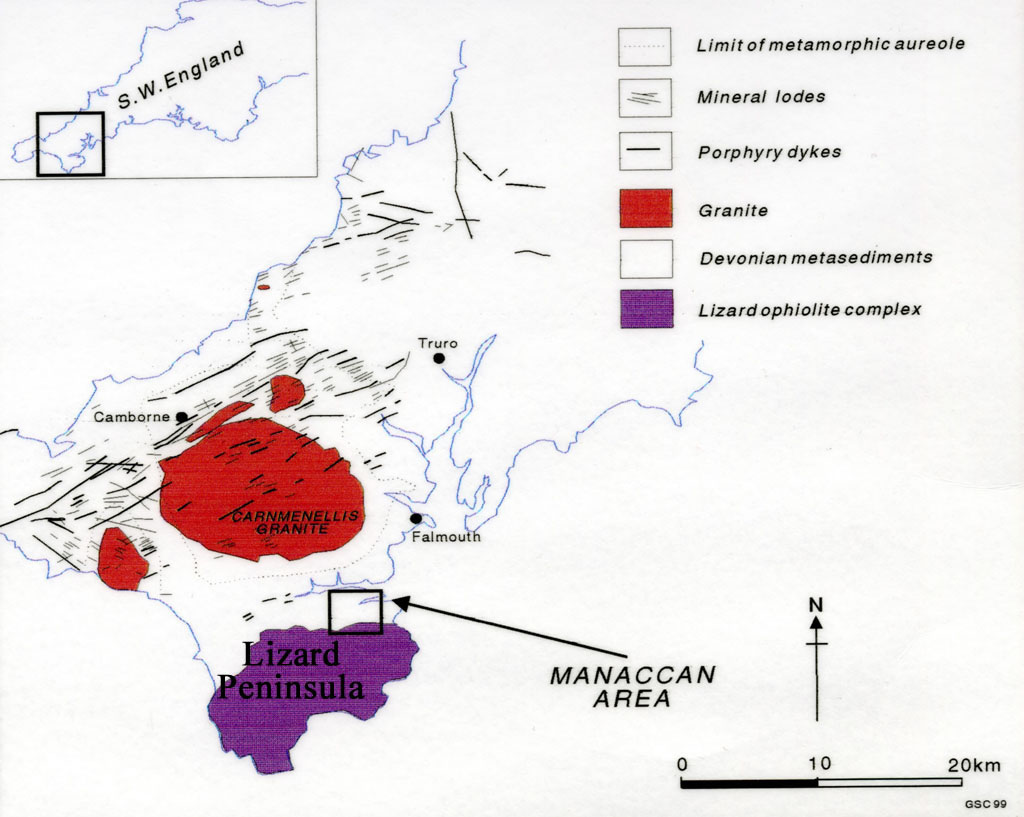Manaccan, England/manaccan003
Previous | Home | NextTo understand the source of Gregor's ilmenite (source of titanium), one must learn about the unusual geology of Manaccan, where he found his "black sand that followed the compass," i.e., black magnetic sand, known today as ilmenite, iron titanate, FeTiO3. The geology of Cornwall was determined by events during the Devonian and Carboniferous Eras (400-300 million years ago) when continents collided to form a mountain chain from Poland to Alabama (North American and Europe at that time were connected, before they drifted apart). This event is known as the Variscan (or Hercynian) orogony as Euramerica (Laurussia) collided with the precursor supercontinent Gondwana (Africa-South America-India-Antarctica). The collision was so violent that an "ophiolite" (old sea crust and earth's mantle) was forced up to the surface of the earth) which today constitutes the Lizard Peninsula (purple color in graphic), the southernmost point in Cornwall. Rocks in an ophiolite are low in silicon, high in iron, and can be rich in elements such as titanium. Gabbro (coarse-grained basalt) outcroppings with inclusions of ilmenite occur south of the Menaccan area. Over the eons these inclusions have been eroded away and washed northward into the Menaccan area. The name "Lizard" has nothing to do with the reptile; it is of Cornish derivation meaning "high court."
The lighter granites (rich in silicon) were found north of the Lizard Peninsula (red color in graphic) and were a rich source of tin, extensively excavated by Cornish miners. Millennia ago tin was mined from these rich deposits and traded to Phoenicians and Romans.
